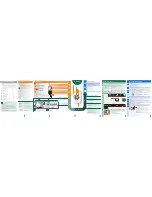
10
Rust sensitive steel parts:
Cutlery with wooden or horn handles
Cutlery with mother of pearl or porcelain handles
Non heat resistant plastic parts
No glued dish or cutlery parts
No items made out of copper, tin or aluminium
Sensitive decorative glasses and porcelain parts
Lead crystal glasses
Art and crafted articles
Aluminium and silver tend to discolour
Glass and crystal articles may lose their shine over time
Sponges and dishcloths
Note
Do not wash items soiled with cigarette ash, candle wax, varnish, paints or chemicals.
Recommendation:
When buying new dishes, note whether they are suitable for the dishwasher.
(marked as dishwasher proof)
General:
Before you load the dishwasher with dishes
Remove coarse food leftovers
Place all containers such as cups, glasses and pots into the machine with the opening
facing downwards (so that no water can collect)
Dishes and cutlery may not be placed above each other
Glasses may not touch
The movement of the spray arms must not be hindered
Place all large and very dirty items in the lower basket.
Small and light items can go into the upper basket.
Long and narrow items are placed in the middle of the baskets.
Attention
Knives and other utensils with sharp tips and edges must be placed horizontally into the
upper basket due to risk of injury.
Your dishwasher holds a maximum of 12 place settings.
Please do not overload your dishwasher and pay attention to the notes regarding dishes
which are suited to the dishwasher.
Only in this manner will you obtain optimal washing results with a sensible use of energy.
5
Put your appliances rinse aid setting at 1 and apply rinse aid. When the rinse aid is used
up, add more rinse aid to the rinse aid dispenser.
- If you use combined detergents with a rinse aid setting higher than 1, contact with the hands
may leave rainbow-coloured water stains on the washed items and inside the machine.
- These detergents do not contain softening salt so you need to use the softening setting as
described in the manual, making sure that there is water-softening salt in the water softener
with every wash and that you refill the water softener with salt every time it is empty.
Important warning
- Should you encounter a problem that has previously never occured after you start using
these detergents, contact the detergent manufacturer directly. You will find contact details on
the packet.
If you stop using this kind of detergent:
- Ensure that the salt and rinse aid dispensers are full.
- Put the water hardness setting at
the highest level
and run a wash cycle with the appliance
empty.
- After washing while empty,
return
the water hardness setting to the correct level for your
mains water hardness shown in the manual.
- Put the rinse aid setting at the correct level.
What should not be washed in your dishwasher
6
Loading the dishwasher
Cleaning your machine at regular intervals ensures longer
product life and reduces the risk of reccurring problems.
Warning
Always unplug the machine and turn off the water
supply before cleaning.
Use a gentle household cleaner for the outside and
the door seals.
Clean the control panel only with a moist cloth and
clear water.
Cleaning the filters
Clean the filters and the spray arms regularly. A dirty
machine will have a negative effect on the cleaning results.
Main filter
Coarse filter
Micro filter
1. Remove the lower basket from the machine.
2. Turn the coarse filter to the right and pull it out in an
upward direction ( ).
3. Pull out the main filter ( ).
4. Press on the two tongues of the coarse filter and
remove the micro filter ( ).
5. Clean the filters thoroughly under running water. Use
a brush if necessary.
6. Replace main filter
7. Replace the micro filter and the coarse filter into the
main filter. Twist it clockwise until it clicks in.
Warning
Do not operate your dishwasher without a filter.
Ensure that your filters are correctly installed
Clean the filters regularly.
How to clean your dishwasher
7
13
1
2
3
A
B
C
1
A
B
C
2
3






























